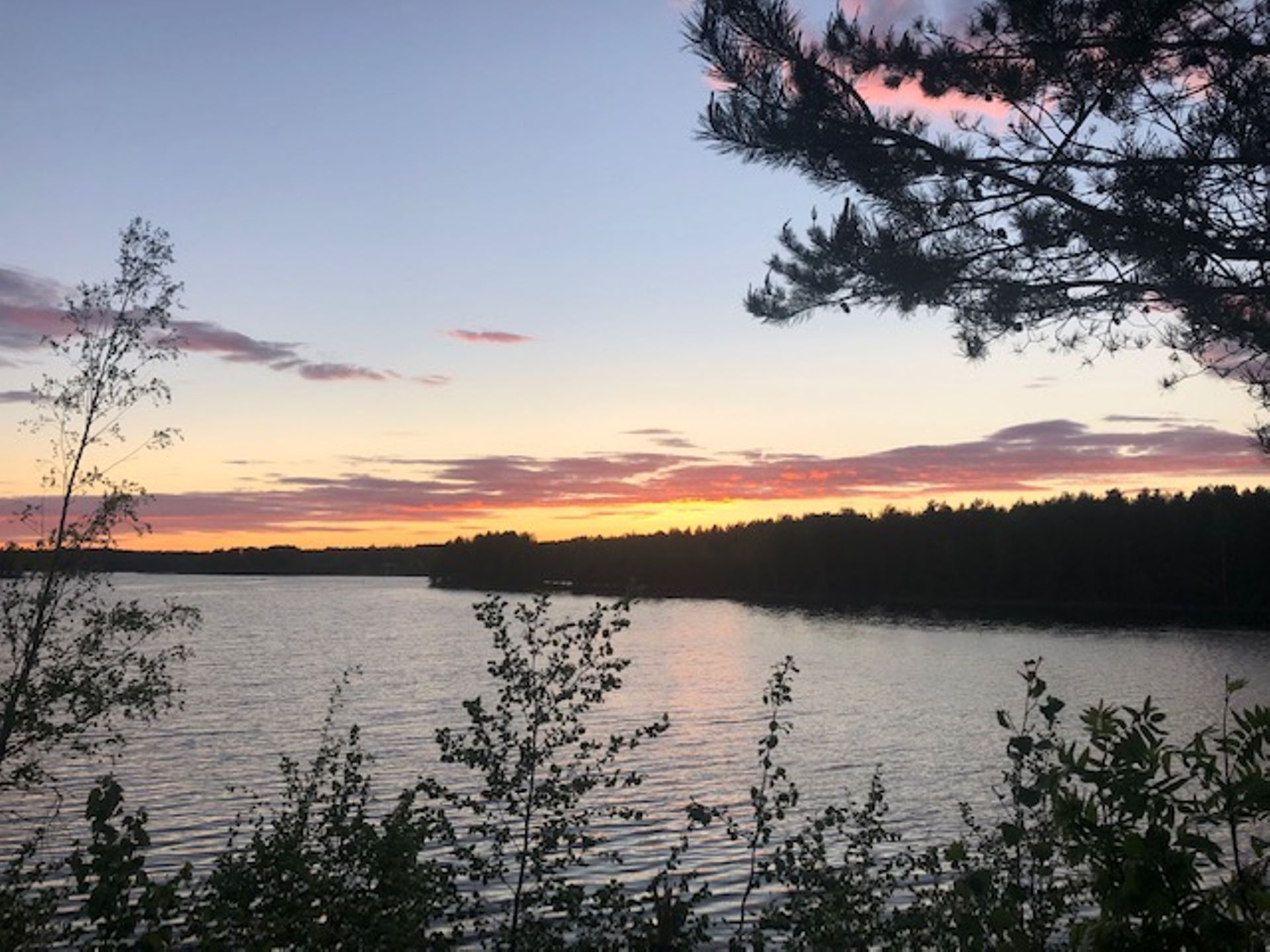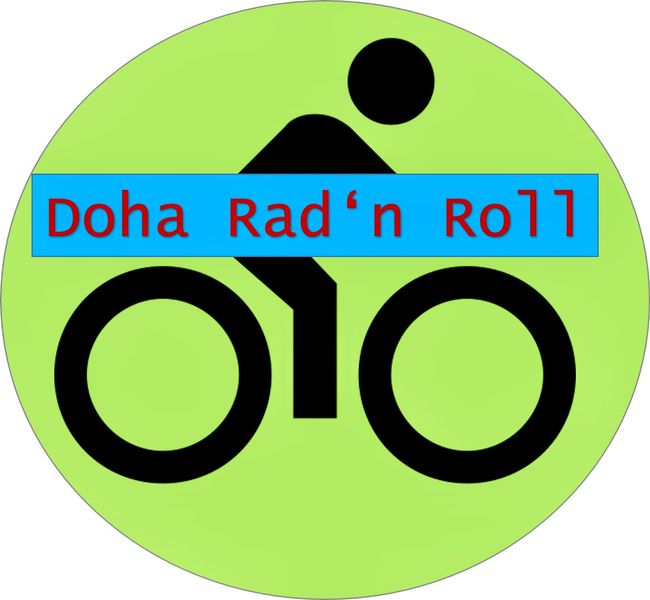In the hinterland of Apulia, following the footsteps of Frederick II of Swabia
Byatangajwe: 04.10.2022
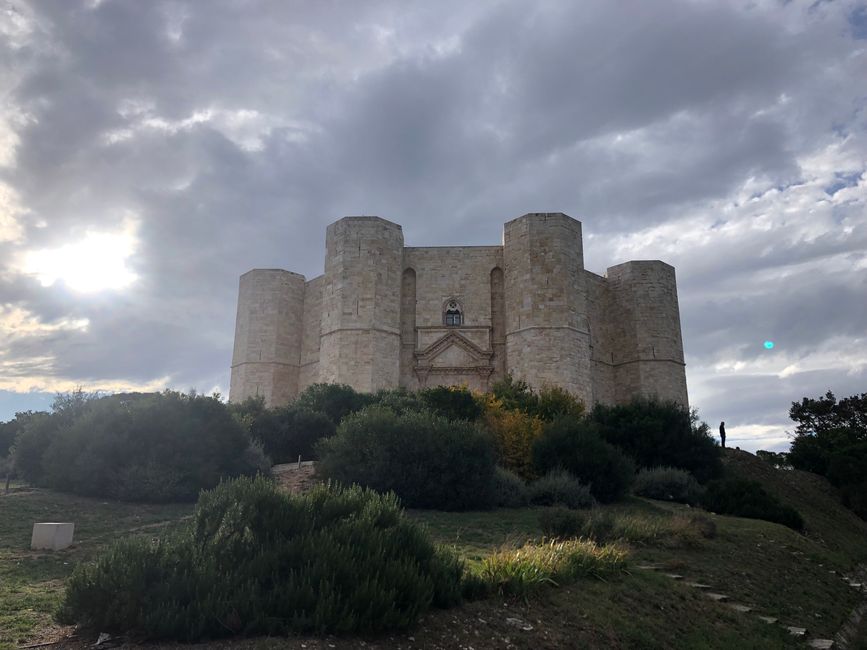
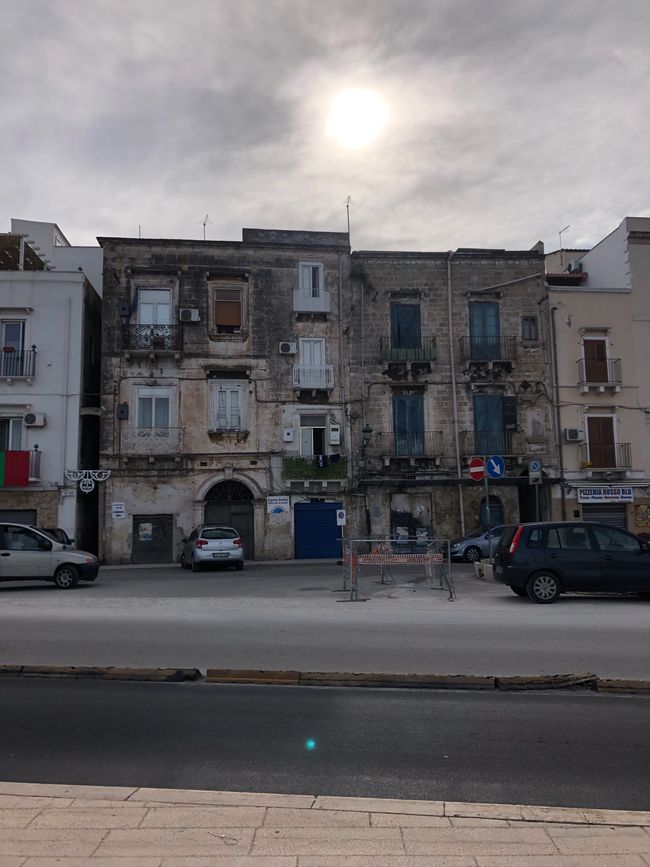
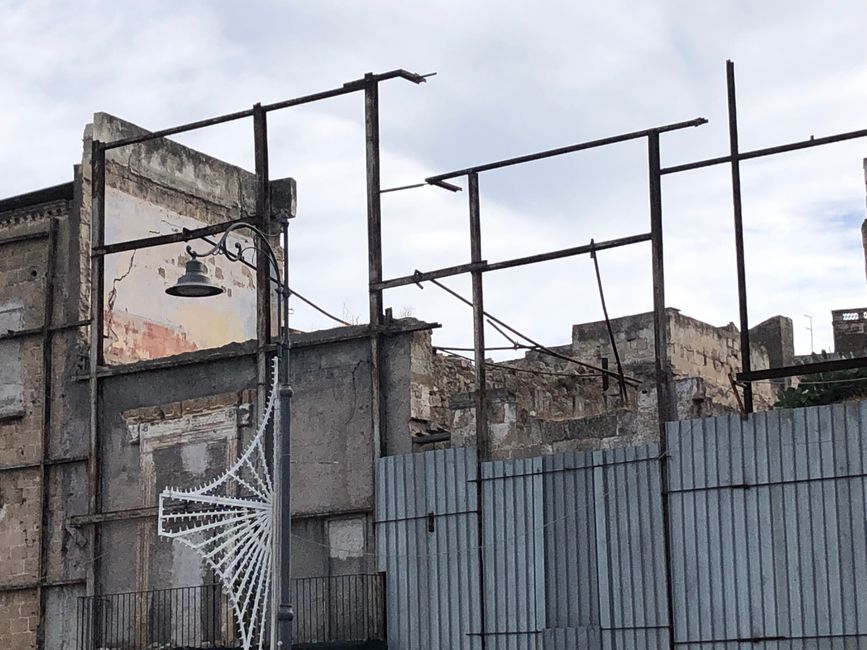

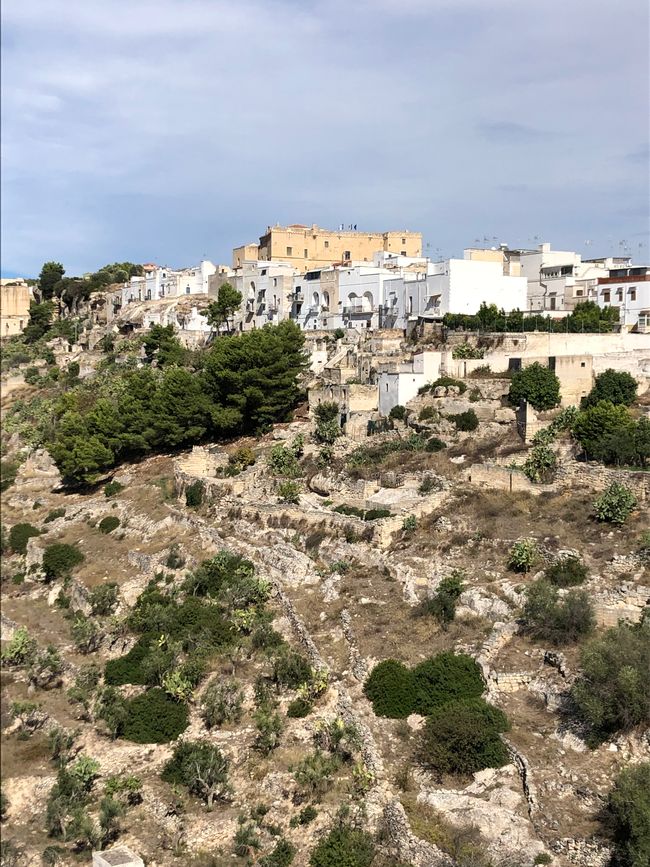
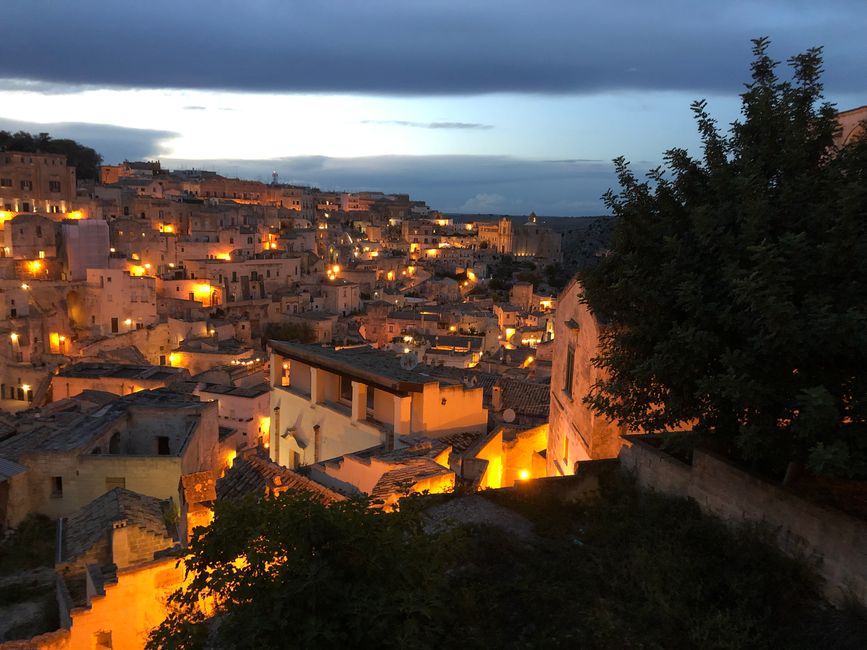

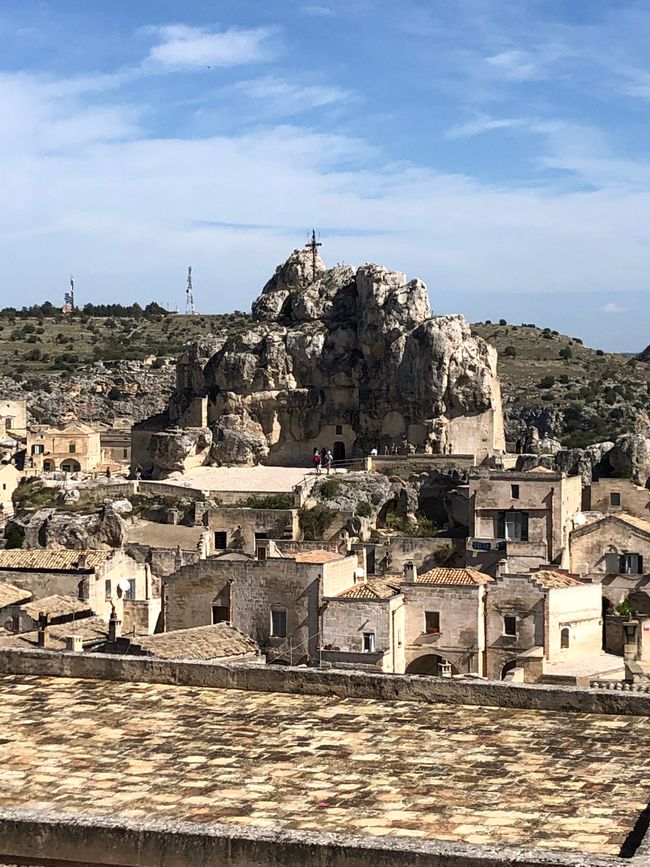
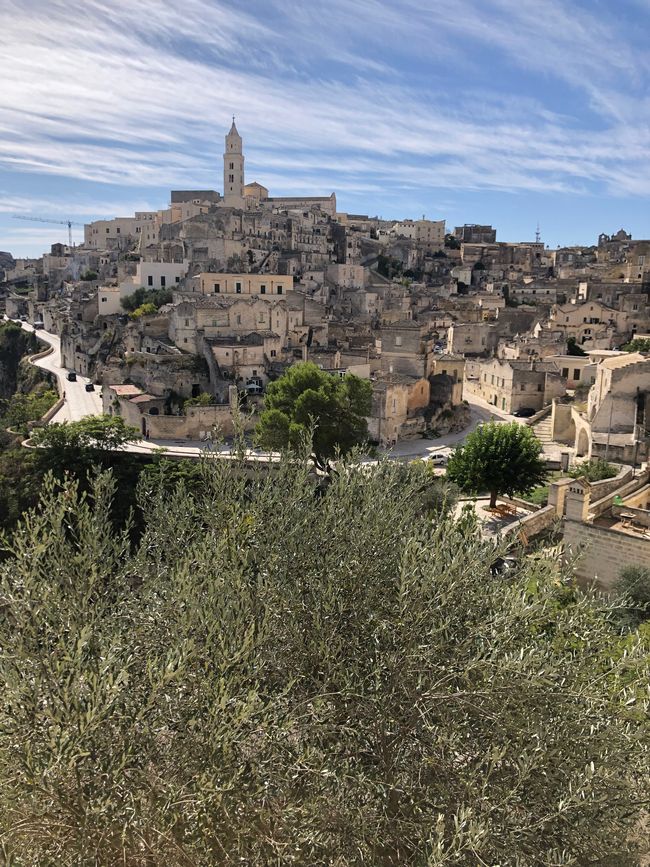
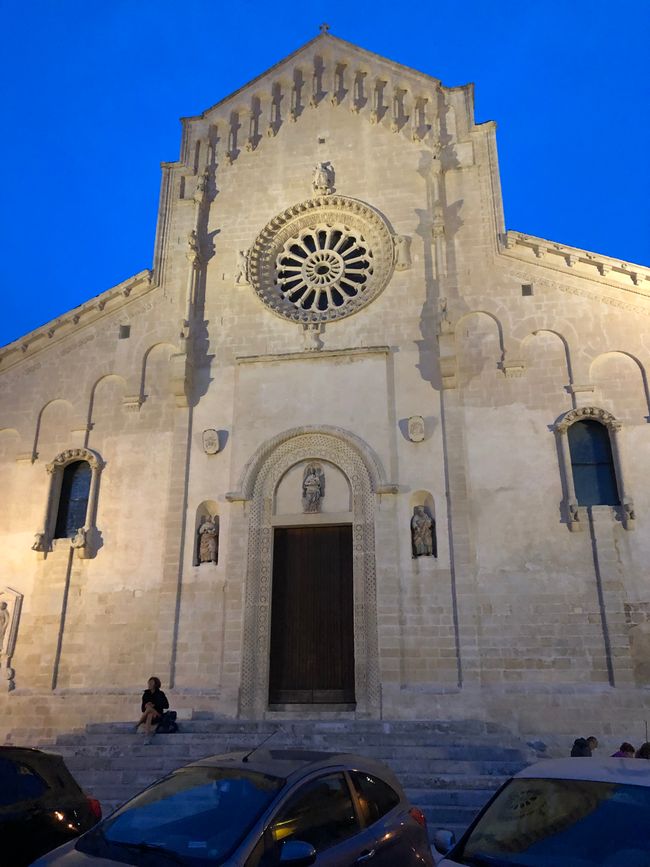
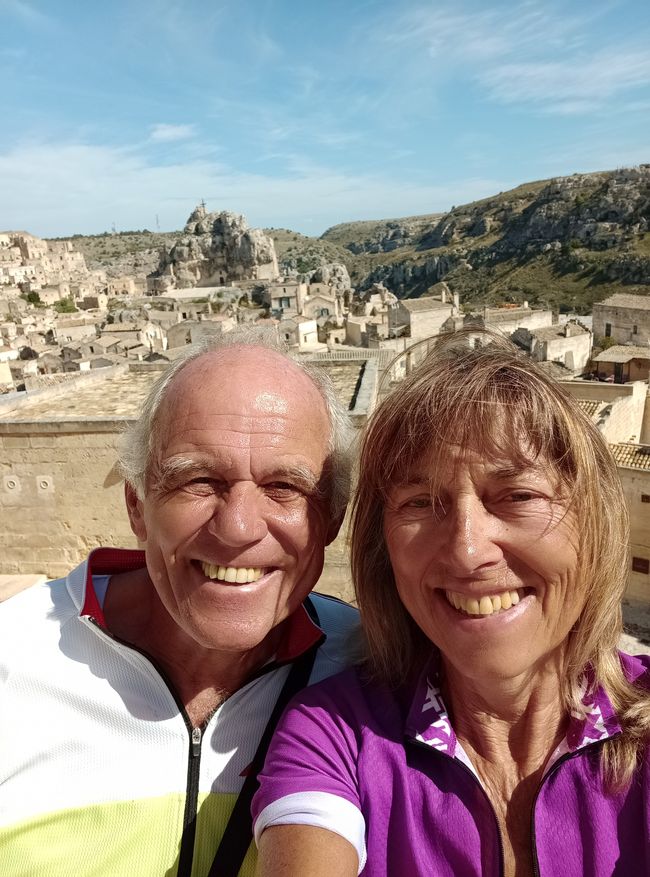
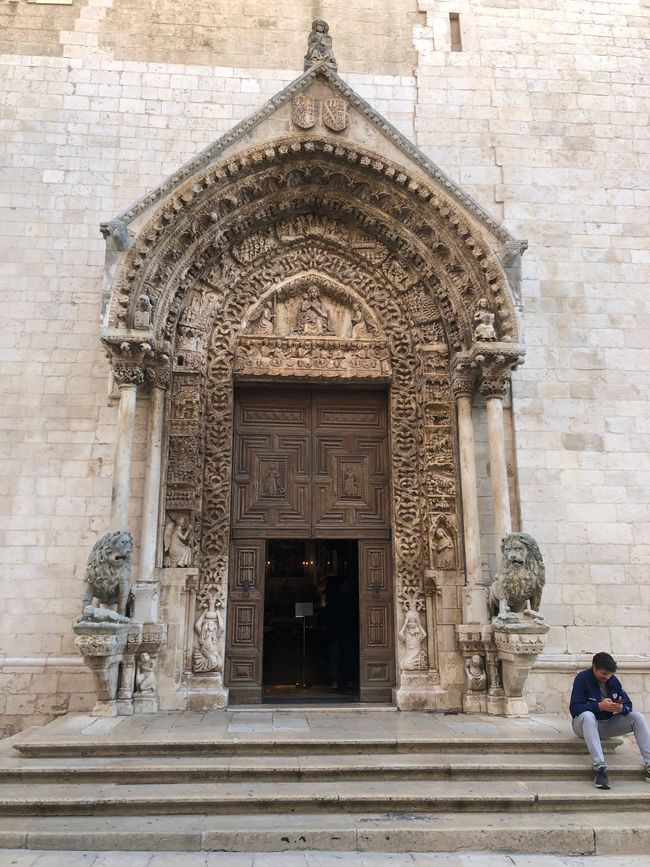

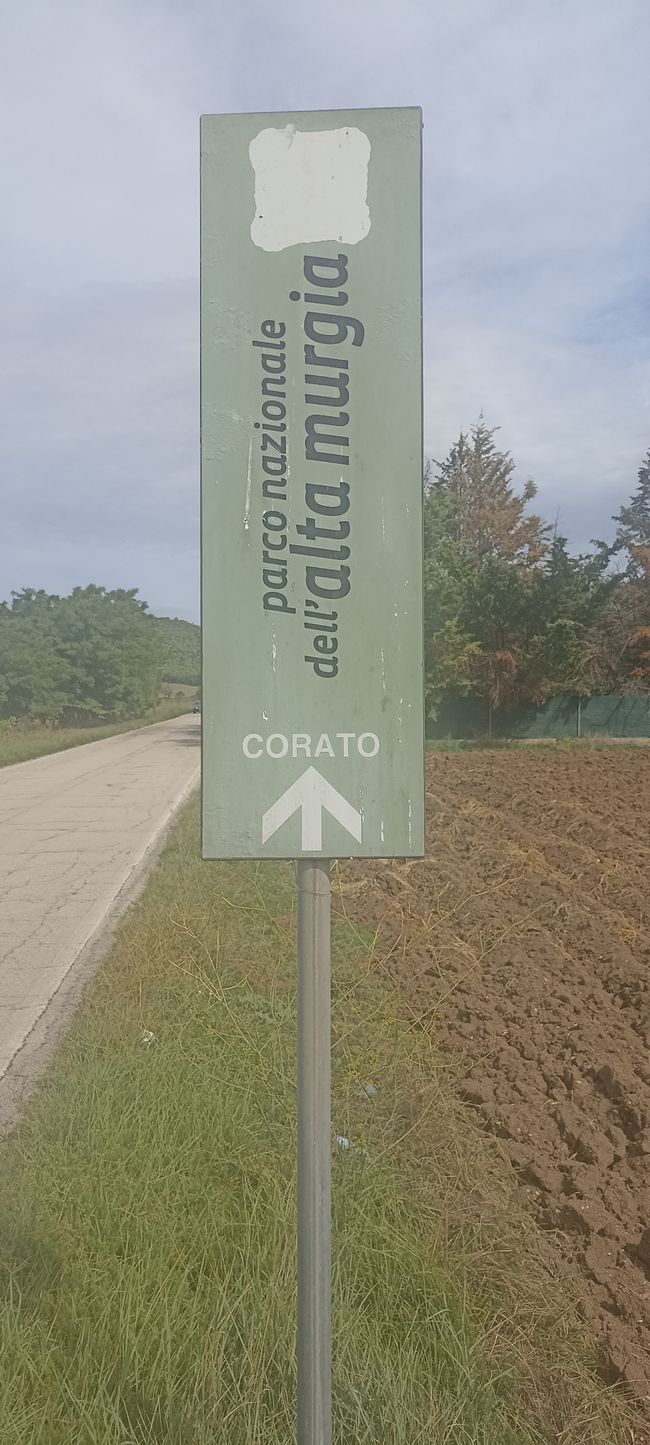
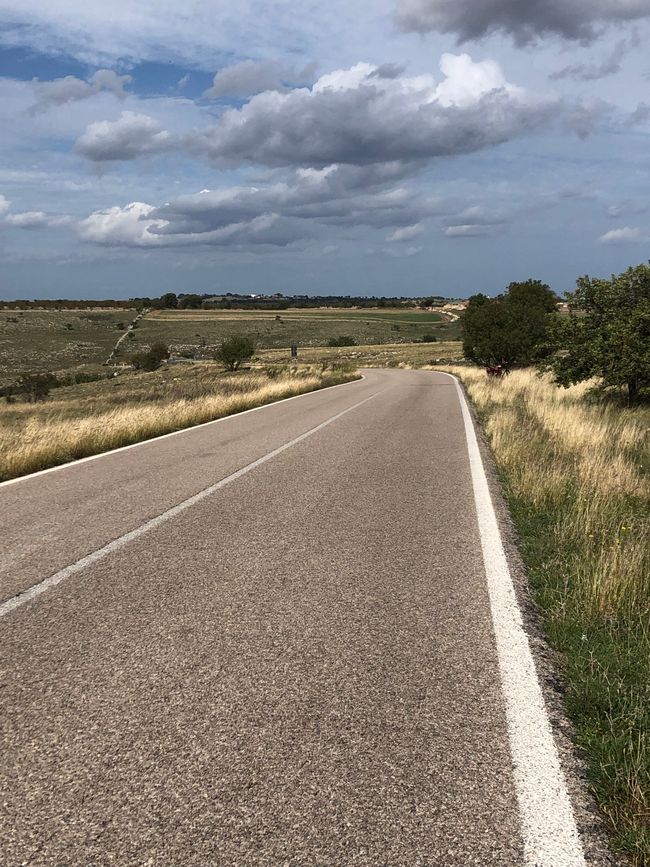
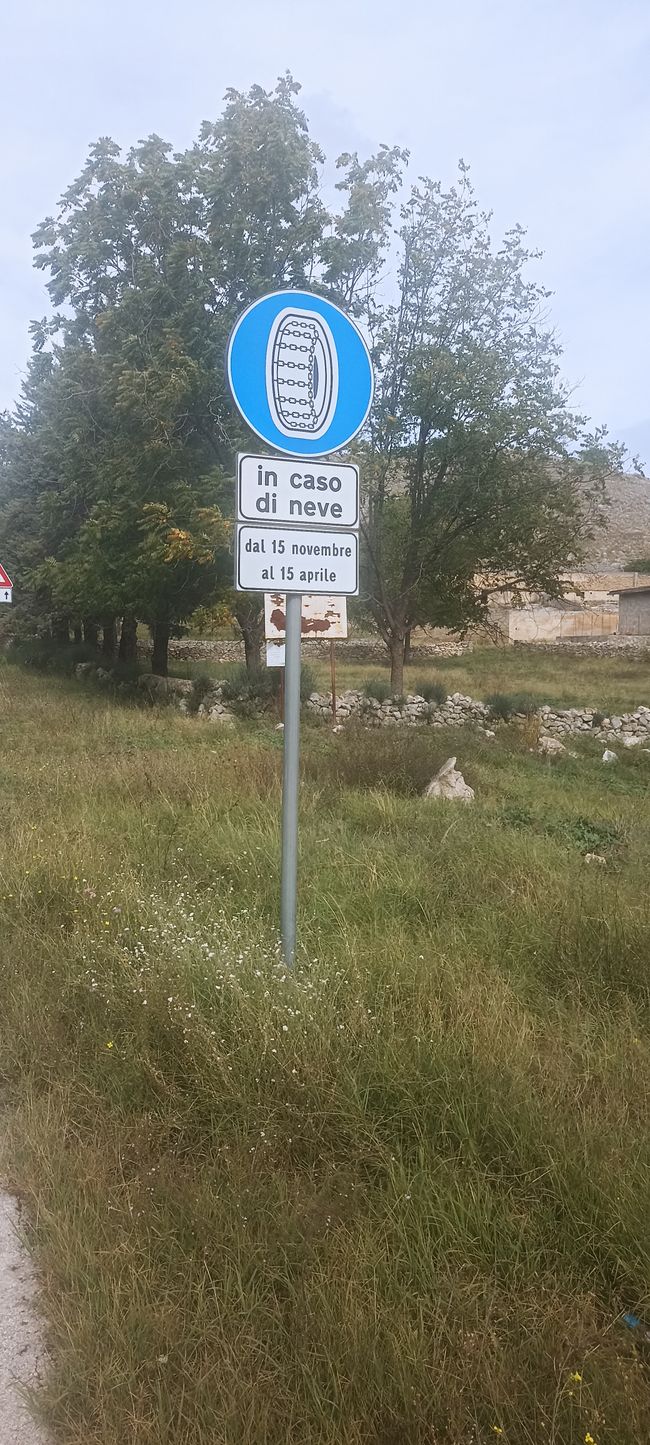
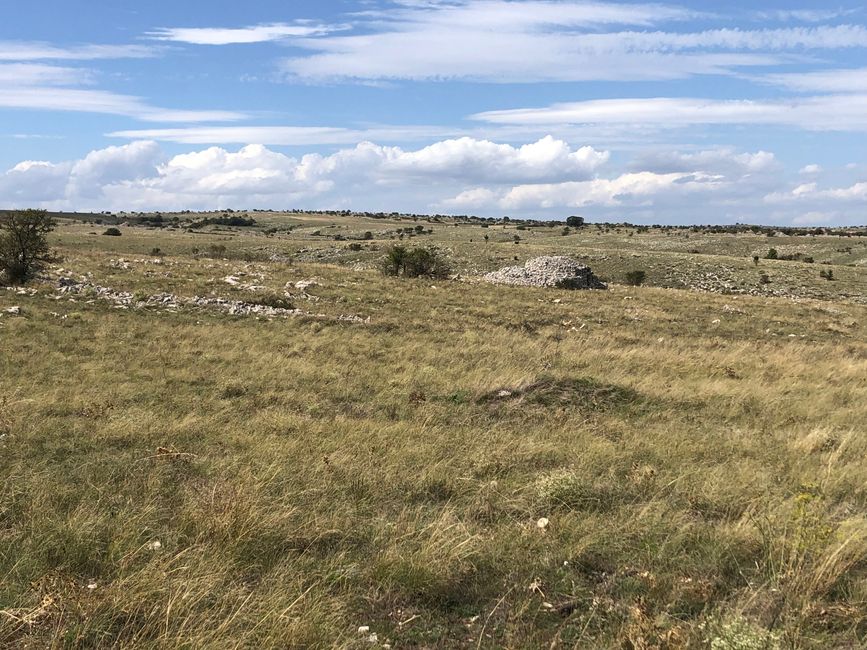
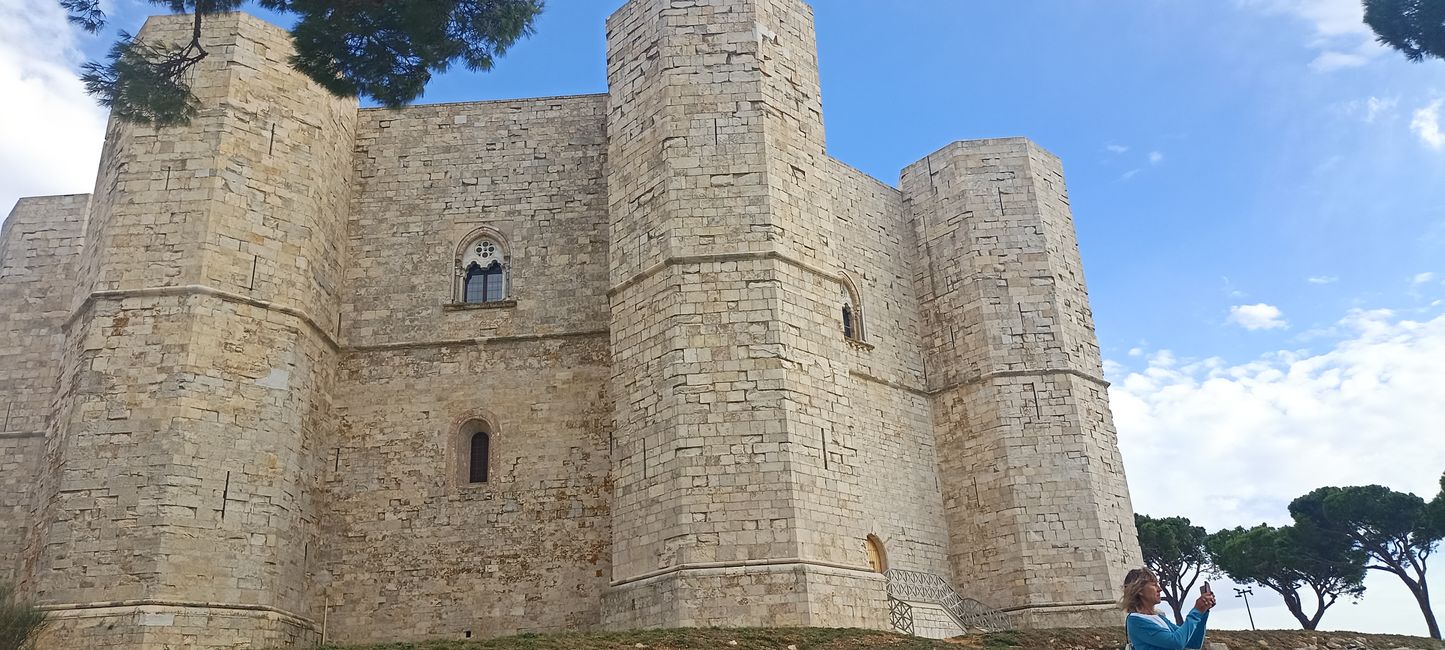
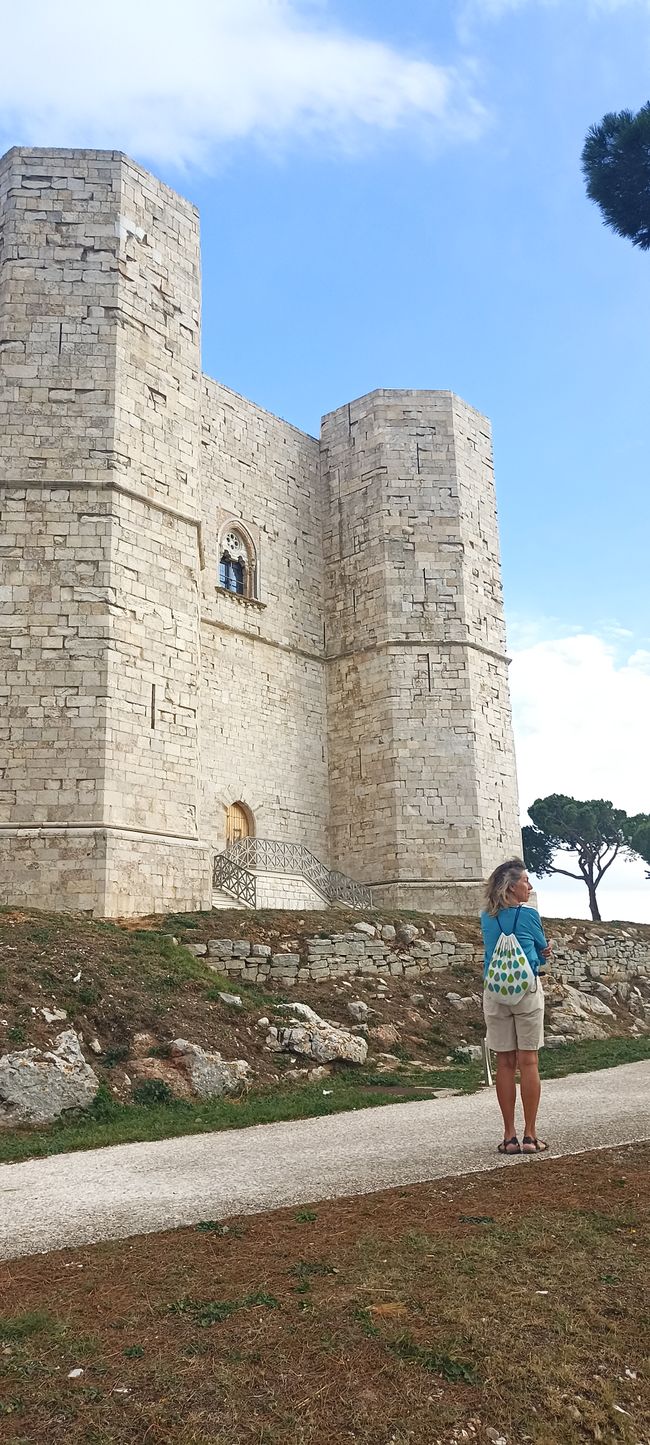
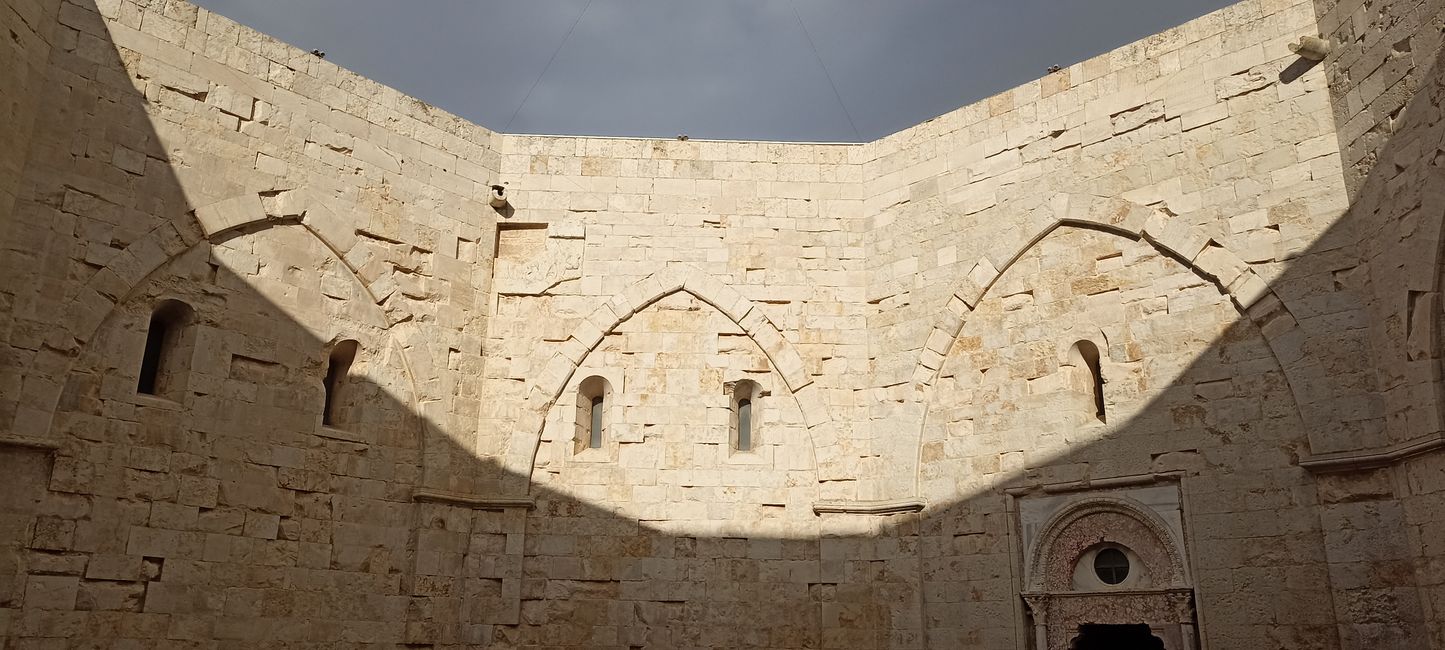
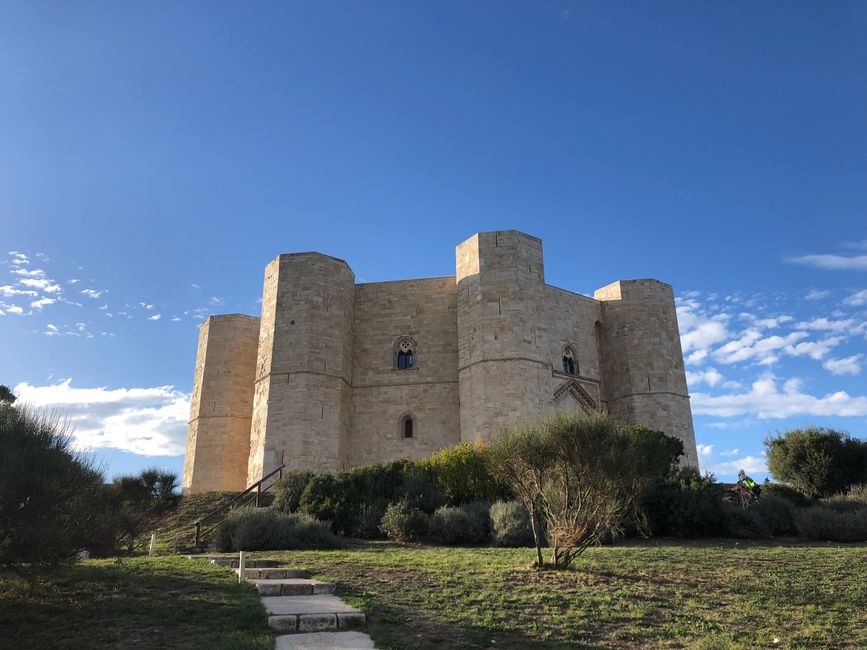
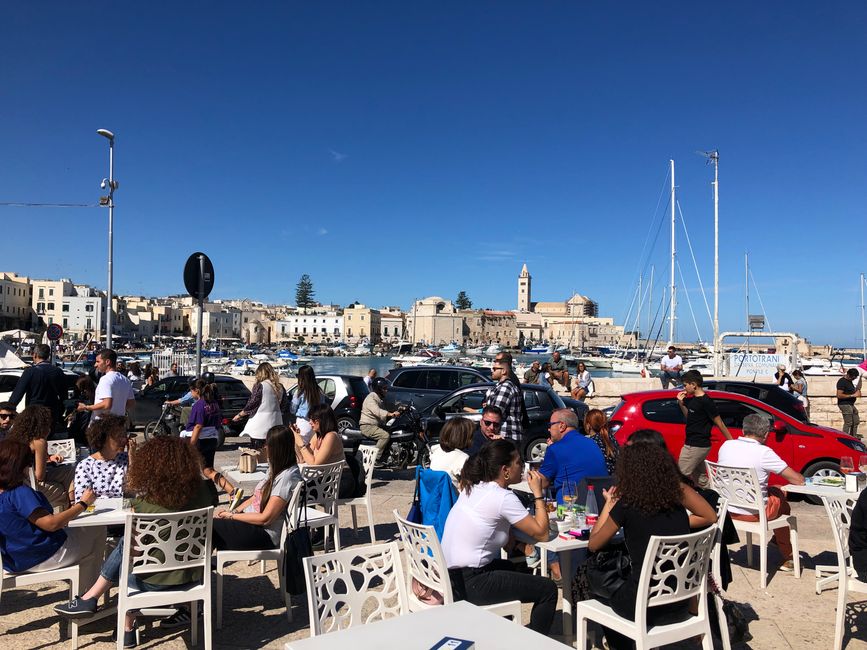
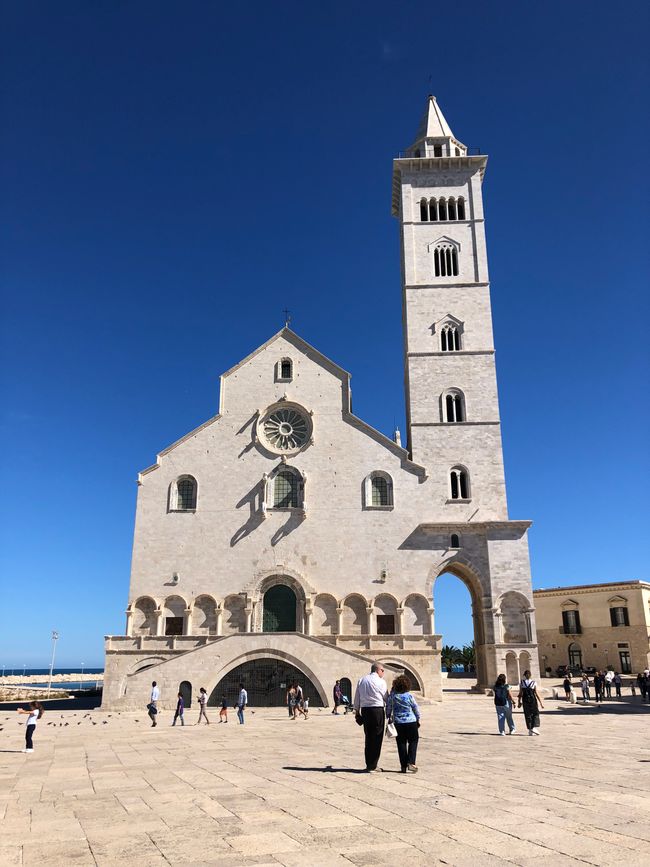
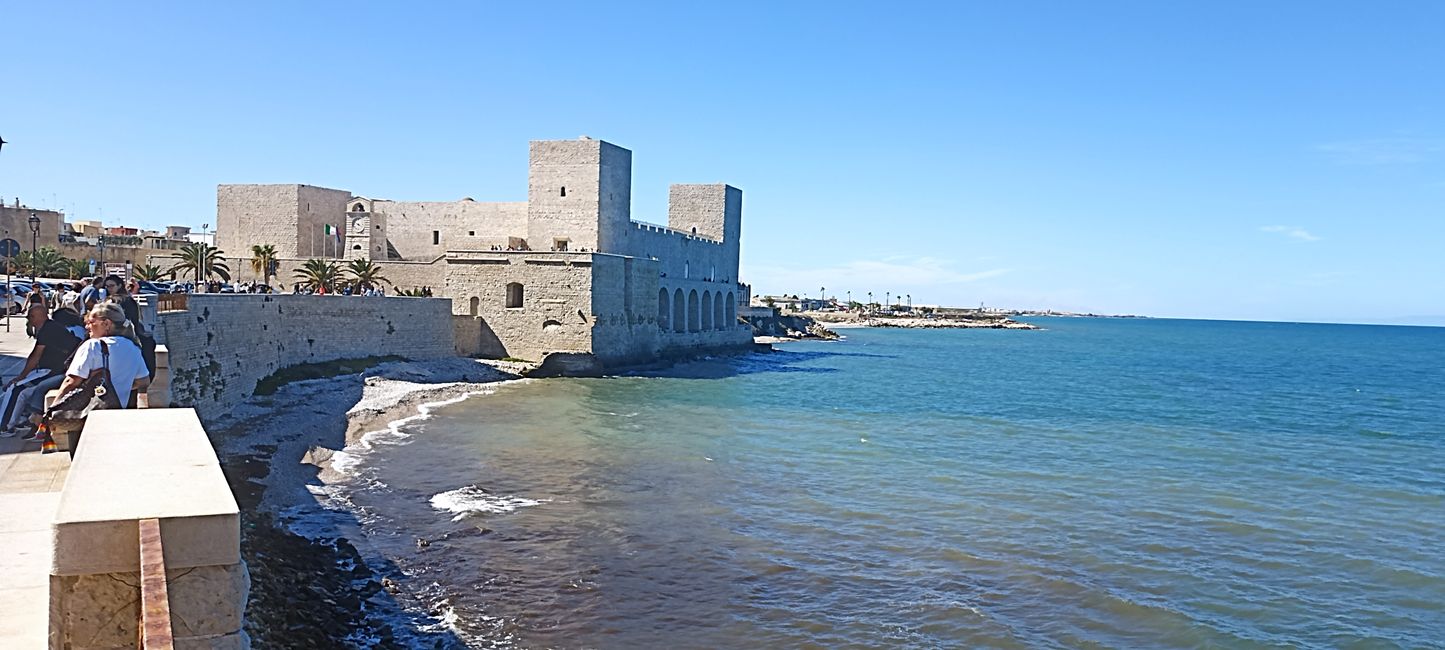

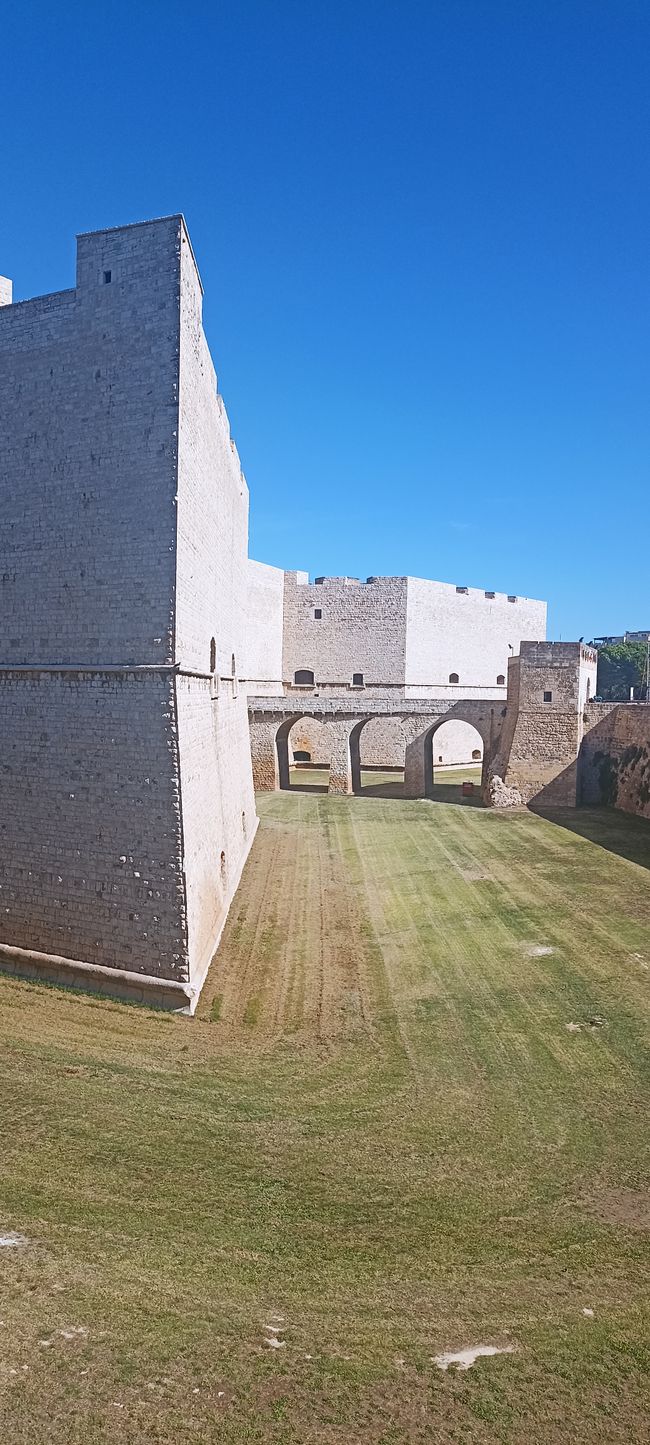
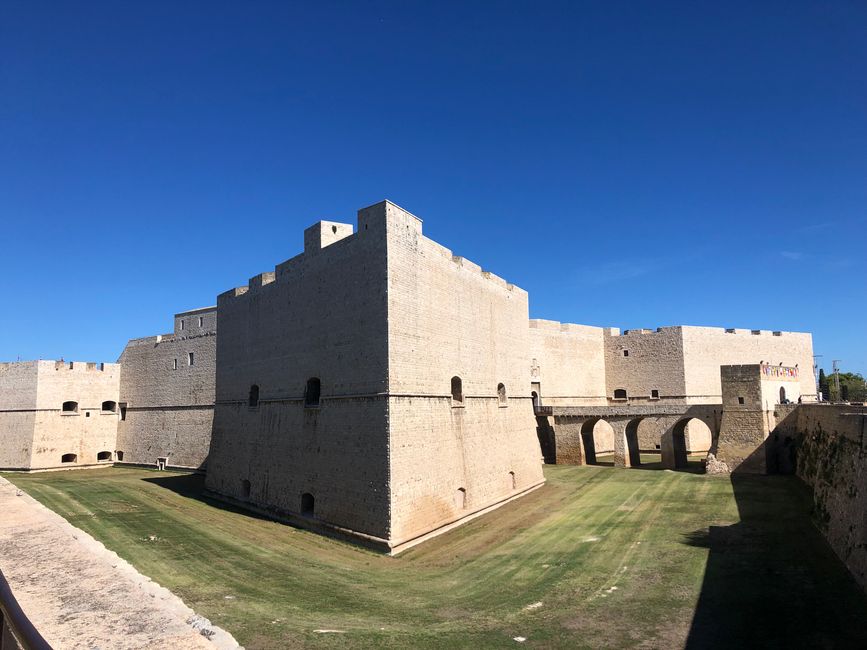
Iyandikishe mu kinyamakuru
After leaving Taranto, we leave the coastal region to visit the historically interesting towns and sites of Sassi di Matera, Altamura, and Castel del Monte. We are following in the footsteps of Frederick II of Swabia. Here, you constantly come across cafes, restaurants, buildings, and stories that have 'Svevi' as an addition in their name, referring to the Hohenstaufen, the Swabian noble family from which Frederick was descended.
September 29: Taranto - Crispiano - Motolla - Laterza - Matera 100 km
We leave the port city of Taranto heading north, passing by the Ilva steelworks, which is considered one of the most polluting in Europe due to serious environmental offenses, but still produces steel and is the main employer in the region. Until Crispiano, we cycle uphill under cloudy skies. Then we ride through large olive groves with trees full of green and black olives to the west. To reach Motolla, we have to pedal hard. From Palagianello, we cycle downhill until we reach a well-developed cycle path on a disused railway line. Right next to it is the new railway line. We enjoy the ride over old railway bridges and the views of the impressive Gravina Gorge. Through the Parco delle Gravine, which is connected by a long climb through pine forests, we reach Laterza. It's not far from there to Matera, the famous city of the Sassi, the cave dwellings on the steep cliffs of the Gravina Valley. In the evening, we take a walk along the upper town and are very impressed by the view of the rocky landscape with its illuminated houses and churches. The cathedral square is also very beautiful, with the cathedral flanked by a striking bell tower.
September 30: Matera - Santeramo in Colle - Altamura 45 km
Today's tour is short so that we have enough time in the morning to visit the Sassi. There are two settlements, Barisano and Caveoso, separated by the rocky spur on which the cathedral is located. Both parts have been inhabited since prehistoric times. Apartments and houses were built directly into and onto the rocks, creating a special architectural masterpiece. This also includes rock churches such as the towering Santa Maria di Idris with numerous frescoes from the 11th century. In the 1950s, the Sassi in Matera were completely evacuated due to the sanitary conditions, and 30,000 people were forcibly relocated to modern apartments. In 1986, the Sassi were rediscovered and placed under monument protection. Restoration work began, and restaurants, studios, small shops, and hotels were established. Since 1993, they have been a UNESCO World Heritage Site. In the early afternoon, we make our way to Altamura. There is still time for a detour via Santeramo in Colle. The addition to the name makes it clear that the place is situated on a hill. After a steep climb with two switchbacks, Dominique remarks that I must have found the only pass between Taranto and Bari to get a little exercise. Santeramo is a twin town of Bad Säckingen but doesn't have anything worth seeing for us. However, the gelato at the main square is excellent. We then cycle downhill from Santeramo, and Altamura is naturally located on a hill. The main attraction is the Madonna church, the only ecclesiastical building funded by Frederick II. Almost nothing remains of the original construction, as it was destroyed by an earthquake. We are in Altamura at the right time, as after three years of suspension due to the pandemic, Federicus, a medieval festival in honor of Frederick II, is being celebrated. The festival opens in the evening, the city gate is opened for the soldiers and nobles accompanied by the king, and the whole city is alive with excitement.
October 1: Altamura - Gravina di Puglia - Castel del Monte 55 km
We reach Gravina on secondary roads, where there is a castle of Frederick II that served as a hunting lodge and is still in ruins. Unfortunately, it was closed to the public. We then continue through the Alta Murgia National Park, named after the rocky limestone plateau over which we cycle most of the time. A barren landscape with scattered "dairies," vast plains, and solitude. From the heights, we can already see the shining, powerful, and massive Castel del Monte, the Stone Crown of Apulia. It is very satisfying to be able to approach this special and impressive building by bike. It is fascinating that someone had a castle with an octagonal floor plan, with an octagonal tower at each corner and an octagonal courtyard, built in the middle of this wilderness on a wooded hill. What purpose did the castle serve? It probably had a symbolic function, displaying power, being self-contained and unconquerable. The cathedral portal faces east, defying the pope. The stones made of marble and coral breccia also symbolize power and beauty. And yet, the emperor never visited this building. We explore it extensively and with great interest. Through the main portal, we enter the courtyard and are impressed by the eight 26-meter-high towers. The rooms, which are spread over two floors, are all the same size, height, and darkness. And they are all empty, as they were plundered. So we can only speculate about the purpose of these rooms.
October 2: Castel del Monte - Trani - Barletta - Margherita di Savoia 70 km
In the morning, we enjoy the view of Castel del Monte once again from the side facing the sea. We then cycle downhill through olive groves on secondary roads until we reach the coast again - we are back on the Adriatic. We make a stop in Trani, a beautiful city with an old town center by the harbor. Everything is dominated by the cathedral with its beautiful cream-colored limestone facade, which has served as a landmark for sailors on the Adriatic for many centuries. Just 100 meters away is another 'Castello Svevo', a fortress built by Frederick II. This castle has a square layout with massive square corner towers. It stands in the middle of the bay of Trani and undoubtedly served the defense and control of the city. In Barletta, 20 km to the north, we encounter another coastal fortress of Frederick II. Along the coast, we reach our destination for today, Margherita di Savoia, in the afternoon. However, the city is not as beautiful as its name. All the beach establishments are closed, and the beach is empty. It feels like the Italians definitively say goodbye to the summer from October 1 onwards, take out their winter clothing from the closet, and stroll bundled up along the promenade.
September 29: Taranto - Crispiano - Motolla - Laterza - Matera 100 km
We leave the port city of Taranto heading north, passing by the Ilva steelworks, which is considered one of the most polluting in Europe due to serious environmental offenses, but still produces steel and is the main employer in the region. Until Crispiano, we cycle uphill under cloudy skies. Then we ride through large olive groves with trees full of green and black olives to the west. To reach Motolla, we have to pedal hard. From Palagianello, we cycle downhill until we reach a well-developed cycle path on a disused railway line. Right next to it is the new railway line. We enjoy the ride over old railway bridges and the views of the impressive Gravina Gorge. Through the Parco delle Gravine, which is connected by a long climb through pine forests, we reach Laterza. It's not far from there to Matera, the famous city of the Sassi, the cave dwellings on the steep cliffs of the Gravina Valley. In the evening, we take a walk along the upper town and are very impressed by the view of the rocky landscape with its illuminated houses and churches. The cathedral square is also very beautiful, with the cathedral flanked by a striking bell tower.
September 30: Matera - Santeramo in Colle - Altamura 45 km
Today's tour is short so that we have enough time in the morning to visit the Sassi. There are two settlements, Barisano and Caveoso, separated by the rocky spur on which the cathedral is located. Both parts have been inhabited since prehistoric times. Apartments and houses were built directly into and onto the rocks, creating a special architectural masterpiece. This also includes rock churches such as the towering Santa Maria di Idris with numerous frescoes from the 11th century. In the 1950s, the Sassi in Matera were completely evacuated due to the sanitary conditions, and 30,000 people were forcibly relocated to modern apartments. In 1986, the Sassi were rediscovered and placed under monument protection. Restoration work began, and restaurants, studios, small shops, and hotels were established. Since 1993, they have been a UNESCO World Heritage Site. In the early afternoon, we make our way to Altamura. There is still time for a detour via Santeramo in Colle. The addition to the name makes it clear that the place is situated on a hill. After a steep climb with two switchbacks, Dominique remarks that I must have found the only pass between Taranto and Bari to get a little exercise. Santeramo is a twin town of Bad Säckingen but doesn't have anything worth seeing for us. However, the gelato at the main square is excellent. We then cycle downhill from Santeramo, and Altamura is naturally located on a hill. The main attraction is the Madonna church, the only ecclesiastical building funded by Frederick II. Almost nothing remains of the original construction, as it was destroyed by an earthquake. We are in Altamura at the right time, as after three years of suspension due to the pandemic, Federicus, a medieval festival in honor of Frederick II, is being celebrated. The festival opens in the evening, the city gate is opened for the soldiers and nobles accompanied by the king, and the whole city is alive with excitement.
October 1: Altamura - Gravina di Puglia - Castel del Monte 55 km
We reach Gravina on secondary roads, where there is a castle of Frederick II that served as a hunting lodge and is still in ruins. Unfortunately, it was closed to the public. We then continue through the Alta Murgia National Park, named after the rocky limestone plateau over which we cycle most of the time. A barren landscape with scattered "dairies," vast plains, and solitude. From the heights, we can already see the shining, powerful, and massive Castel del Monte, the Stone Crown of Apulia. It is very satisfying to be able to approach this special and impressive building by bike. It is fascinating that someone had a castle with an octagonal floor plan, with an octagonal tower at each corner and an octagonal courtyard, built in the middle of this wilderness on a wooded hill. What purpose did the castle serve? It probably had a symbolic function, displaying power, being self-contained and unconquerable. The cathedral portal faces east, defying the pope. The stones made of marble and coral breccia also symbolize power and beauty. And yet, the emperor never visited this building. We explore it extensively and with great interest. Through the main portal, we enter the courtyard and are impressed by the eight 26-meter-high towers. The rooms, which are spread over two floors, are all the same size, height, and darkness. And they are all empty, as they were plundered. So we can only speculate about the purpose of these rooms.
October 2: Castel del Monte - Trani - Barletta - Margherita di Savoia 70 km
In the morning, we enjoy the view of Castel del Monte once again from the side facing the sea. We then cycle downhill through olive groves on secondary roads until we reach the coast again - we are back on the Adriatic. We make a stop in Trani, a beautiful city with an old town center by the harbor. Everything is dominated by the cathedral with its beautiful cream-colored limestone facade, which has served as a landmark for sailors on the Adriatic for many centuries. Just 100 meters away is another 'Castello Svevo', a fortress built by Frederick II. This castle has a square layout with massive square corner towers. It stands in the middle of the bay of Trani and undoubtedly served the defense and control of the city. In Barletta, 20 km to the north, we encounter another coastal fortress of Frederick II. Along the coast, we reach our destination for today, Margherita di Savoia, in the afternoon. However, the city is not as beautiful as its name. All the beach establishments are closed, and the beach is empty. It feels like the Italians definitively say goodbye to the summer from October 1 onwards, take out their winter clothing from the closet, and stroll bundled up along the promenade.
Iyandikishe mu kinyamakuru
Igisubizo
